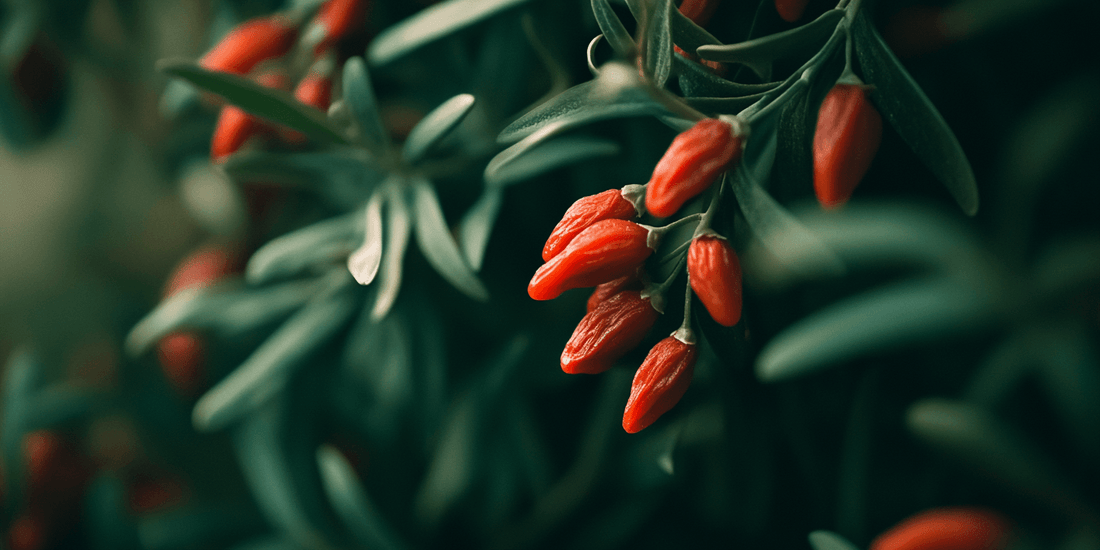Goji berries, often referred to as “superfruits,” are a rewarding plant to grow in containers. Their adaptability makes them perfect for container gardening, offering the flexibility to grow goji berries indoors or outdoors. This guide walks you through the process of successfully cultivating goji berries in pots, from selecting the right container to managing pests, with an emphasis on organic and sustainable methods.
Selecting Suitable Containers
The first step to growing healthy goji berries in pots is choosing the right container. Goji plants have extensive root systems, so the container must accommodate their growth. A pot with a minimum depth of 18-24 inches and a width of at least 16 inches is ideal. Materials such as terracotta, wood, or food-grade plastic are commonly used, but make sure the container has adequate drainage holes to prevent waterlogging.
For mobility, consider using pots with wheels or placing them on a rolling plant stand. This makes it easier to move the plants indoors during winter or to reposition them for optimal sunlight exposure. Remember, goji berries thrive in full sun, so place containers where they receive at least six to eight hours of sunlight daily.
Key Tip:
Choose a container with a saucer to catch excess water, but empty it regularly to avoid water stagnation, which can harm the roots.
Soil Preparation
The quality of soil is crucial for the success of container-grown goji berries. These plants prefer well-draining, loamy soil with a slightly acidic to neutral pH, ideally between 6.5 and 7.0. The best soil for goji berries is a mix of organic potting soil combined with sand or perlite to improve drainage.
Incorporate organic compost or aged manure into the soil mixture to provide essential nutrients. Avoid heavy, clay-based soils, as they can retain too much moisture and suffocate the roots. You can also add a small amount of agricultural lime if the soil tends to be too acidic.
Sustainable Tip:
Use organic soil amendments, such as worm castings or kelp meal, to enhance soil fertility naturally and support sustainable growing practices.
Watering and Fertilization
Proper watering and fertilization are vital to healthy goji berry plants. Goji berries require consistent moisture but are sensitive to overwatering. Water the plants when the top inch of soil feels dry to the touch. In general, watering goji plants 2-3 times per week during the growing season is sufficient, but adjust based on weather conditions and the plant’s location.
Container gardening goji plants requires regular feeding to replenish nutrients lost during watering. Fertilizing goji berries with a balanced organic fertilizer, such as a 10-10-10 formula, every four to six weeks will promote robust growth and higher yields.
Additionally, you can supplement with liquid seaweed or fish emulsion during the growing season for a natural nutrient boost.
For the best results, choose from our wide selection of premium organic fertilizers, soil amendments, and essential growing tools to keep your container plants thriving. Explore our Fertilizers & Growing Supplies to find everything you need for optimal soil health and sustained plant vigor.
Common Mistake:
Avoid using synthetic fertilizers, as they can lead to salt buildup in containers, which may harm the plants over time.
Pruning Techniques
Pruning potted goji berry plants is essential for maintaining their size, shape, and productivity. Begin by removing dead, damaged, or diseased branches in early spring before new growth appears. Thin out overcrowded branches to improve airflow and light penetration, which reduces the risk of fungal diseases.
Training your goji plant to grow upright by using stakes or a small trellis can prevent sprawling and save space. This is especially beneficial for container gardening, as it keeps the plant compact and manageable.
Pruning potted goji plants also encourages fruit production by directing the plant’s energy toward flowering and fruiting rather than excessive foliage growth.
Expert Tip:
Prune suckers that emerge at the base of the plant to redirect energy to the main stems, ensuring a healthier plant and better container-grown goji yield.
Pest Management
Indoor and outdoor goji berry plants are susceptible to various pests, but with proactive measures, you can protect your plants organically. Common indoor goji berry pests include spider mites, whiteflies, and aphids. For outdoor plants, watch for beetles and caterpillars.
To manage pests organically, introduce beneficial insects such as ladybugs and lacewings, which prey on harmful pests. Regularly inspect the undersides of leaves for signs of infestation and remove any pests manually if possible. Neem oil or insecticidal soaps are effective, eco-friendly solutions for treating infestations without harming the environment.
Sustainable Tip:
Encourage biodiversity in your garden by planting companion plants like marigolds and basil near your goji berries to repel pests naturally.
In Summary
Growing goji berries in containers is a rewarding and sustainable gardening project that suits both beginners and experienced gardeners. By selecting the right container, preparing nutrient-rich soil, maintaining proper watering and fertilization schedules, pruning for optimal growth, and managing pests organically, you can enjoy a bountiful harvest of goji berries year after year. Whether you’re growing goji berries indoors or on a sunny patio, these adaptable plants are a fantastic addition to any garden.
✂️ Resource Area: Pruning & Training Tips
Enhance plant health and yield through smart pruning and support:
- Pruning and Training Goji Berry Plants – When and how to prune for best results.
- Innovative Uses of Goji Berry Plants in Landscaping – Tips for shaping plants into design features.
- Propagating Goji Berries from Seeds and Cuttings – Generate new material for replacement or design needs.

